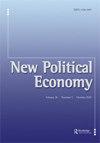抑制住房金融化的工具
IF 3.8
2区 经济学
Q1 ECONOMICS
引用次数: 1
摘要
摘要对住房金融化的广泛研究,以及关于其对住房负担能力的负面影响的激烈的公众和政治辩论,已经转化为令人惊讶的温和和分散的政策回应。这反映了金融化的赢家和输家之间的权力失衡,但也反映了由于其多样化、复杂和不断演变的性质以及缺乏去金融化工具的研究,驯服金融化所固有的挑战。为了解决这一关键的证据差距,本文借鉴了金融回路的概念,并对56个联合国欧洲经济委员会成员国的政策反应进行了比较研究。将这些政策回应与对住房负担能力影响最大的金融回路特征的四部分类型进行比较,可以发现行动不均衡和不充分的模式。大多数政府都专注于控制住房融资回路的规模,而控制这些回路的数量和成本的行动有限,实际上没有采取任何行动来影响其重点。一些政策措施减少了信贷流动,从而降低了房价增长,但其有效性因反补贴政策和糟糕的政策设计而受到损害,导致目标制定和执行不力。本文章由计算机程序翻译,如有差异,请以英文原文为准。
Tools to tame the financialisation of housing
ABSTRACT The extensive research on financialisation of housing and lively public and political debate on its negative implications for housing affordability have translated into surprisingly modest and fragmented policy responses. This reflects the power imbalance between the winners and losers from financialisation, but also the challenges inherent in taming financialisation due to its variegated, complex, and evolving nature and shortage of research on de-financialisation tools. To address this critical evidence gap, this article draws on the concept of financial circuits and comparative research on policy responses in the 56 United Nations Economic Commission for Europe member states. Comparing these policy responses with a four-part typology of the features of financial circuits which impact most on housing affordability reveals a pattern of uneven and inadequate action. Most governments have focused on controlling the scale of housing finance circuits, whereas limited action to control the number and cost of these circuits and practically no action to influence their focus has been taken. Some policy measures have reduced credit flows and thereby diminished house price growth, but their effectiveness has been undermined by countervailing policies and poor policy design, leading to inadequate targeting and implementation weaknesses.
求助全文
通过发布文献求助,成功后即可免费获取论文全文。
去求助
来源期刊

New Political Economy
Multiple-
CiteScore
10.10
自引率
9.50%
发文量
41
期刊介绍:
New Political Economy aims to create a forum for work which combines the breadth of vision which characterised the classical political economy of the nineteenth century with the analytical advances of twentieth century social science. It seeks to represent the terrain of political economy scholarship across different disciplines, emphasising original and innovative work which explores new approaches and methodologies, and addresses core debates and issues of historical and contemporary relevance.
 求助内容:
求助内容: 应助结果提醒方式:
应助结果提醒方式:


